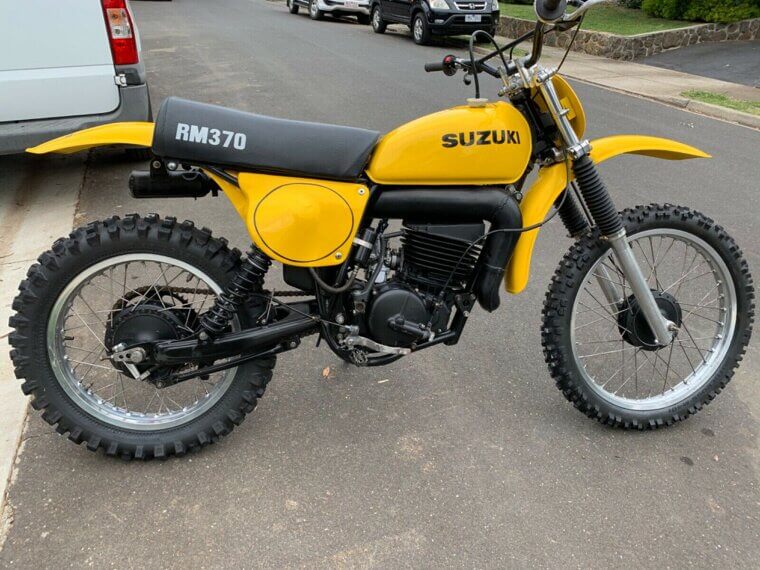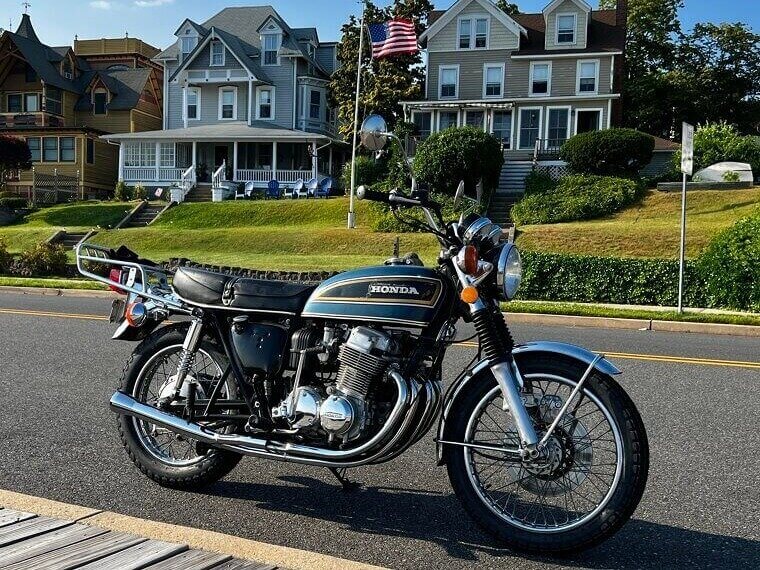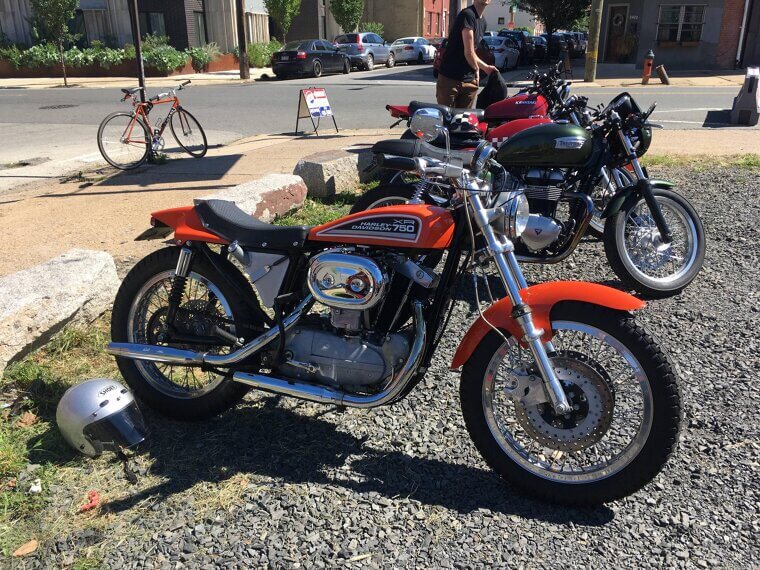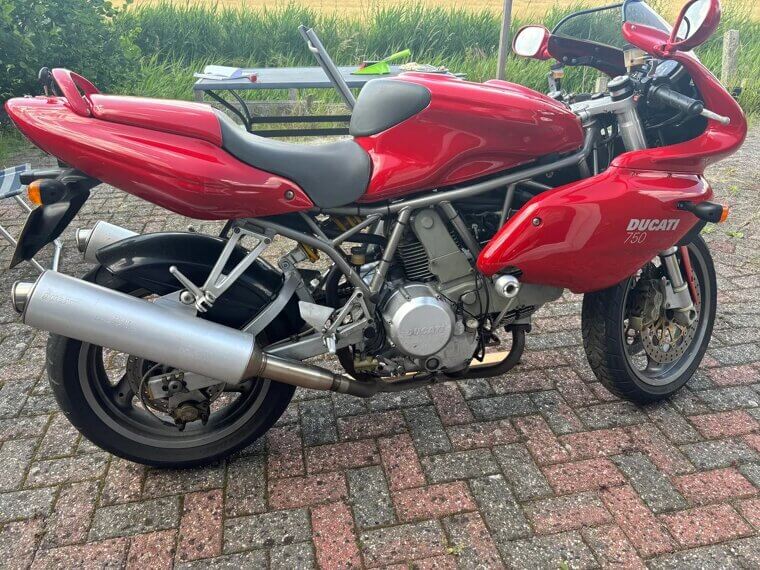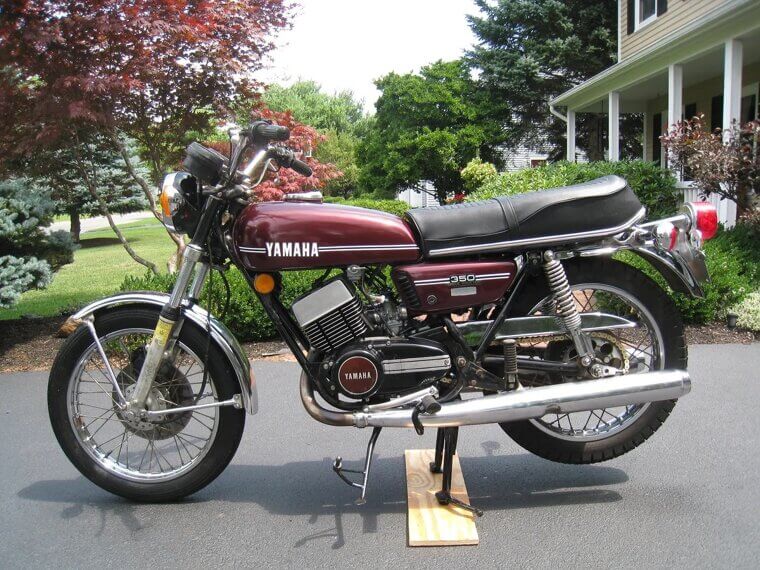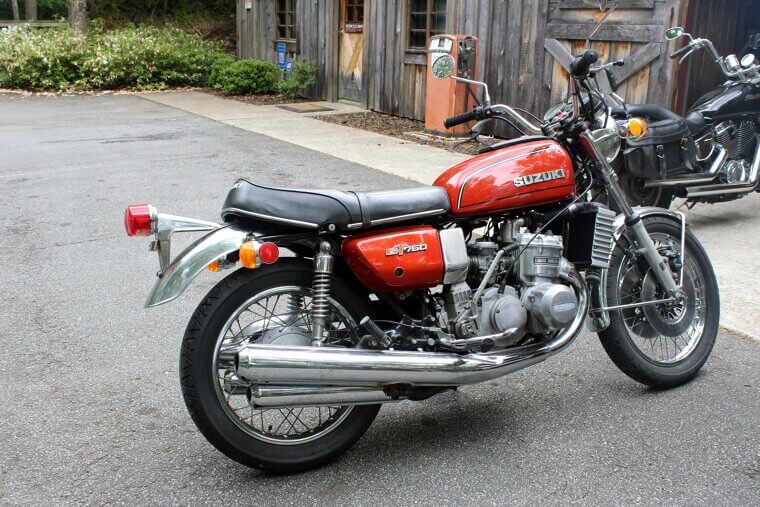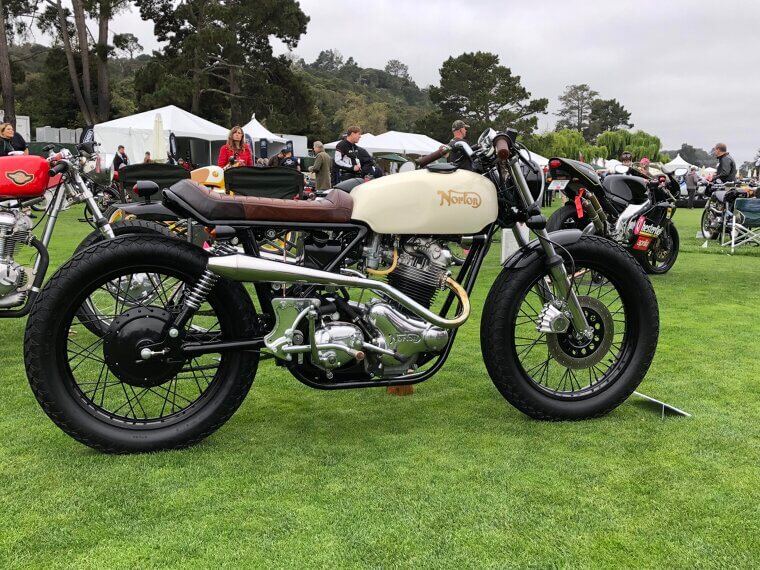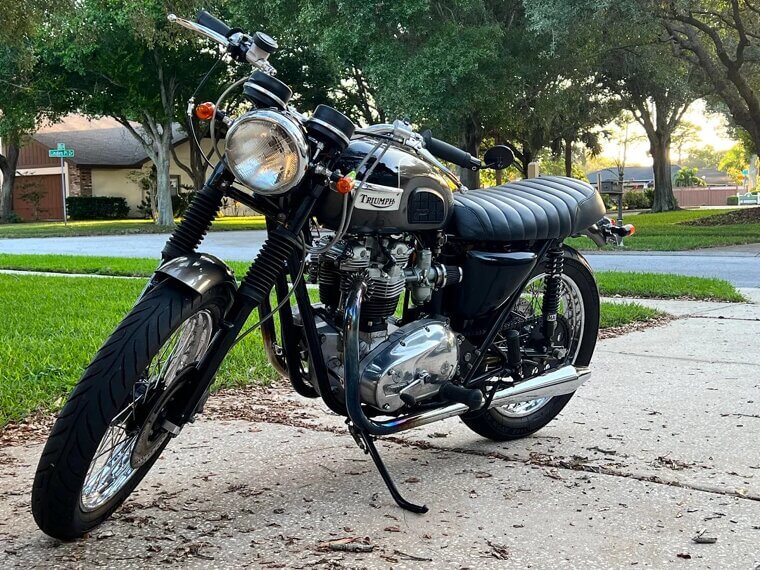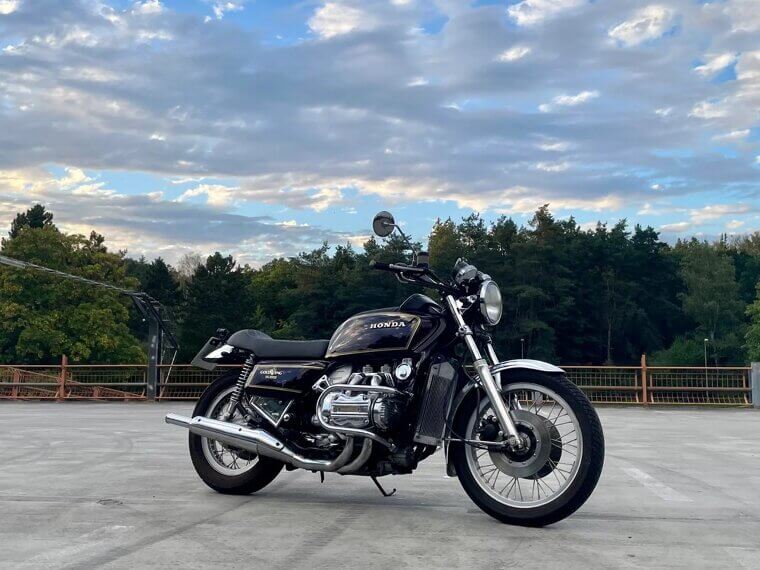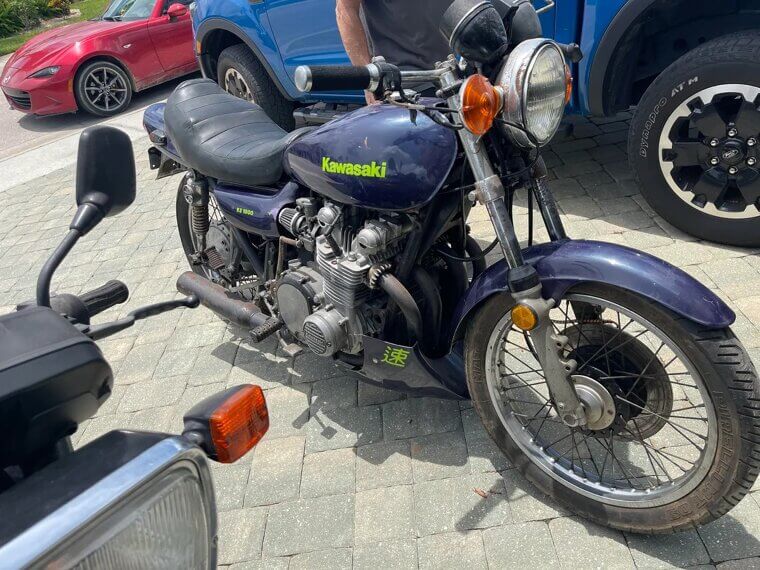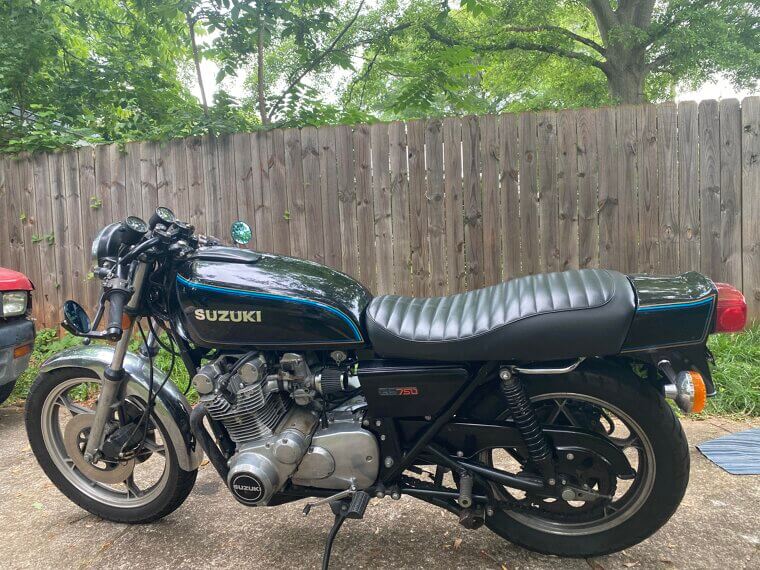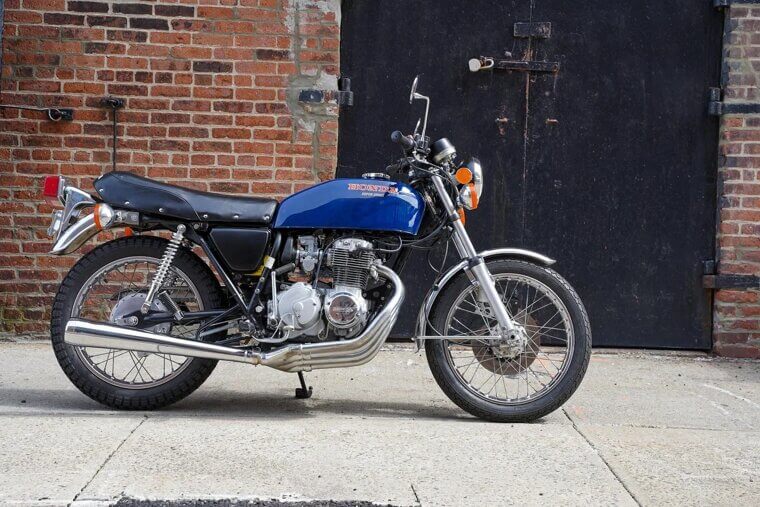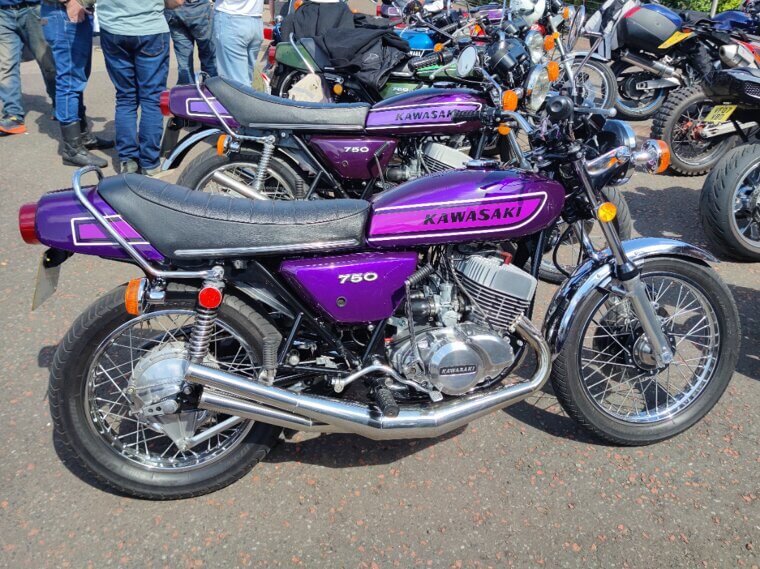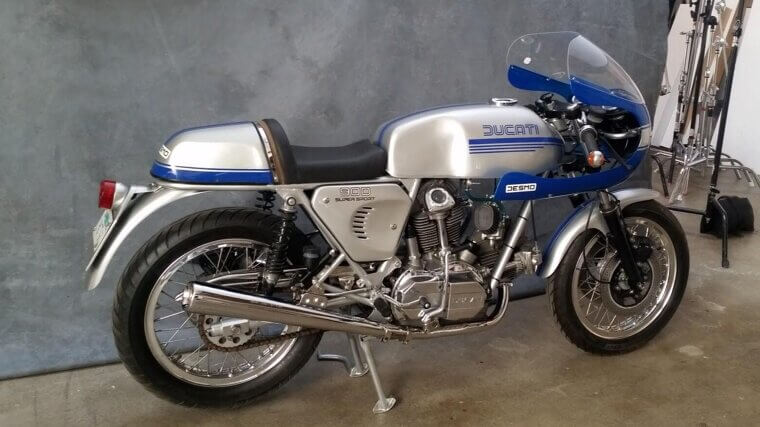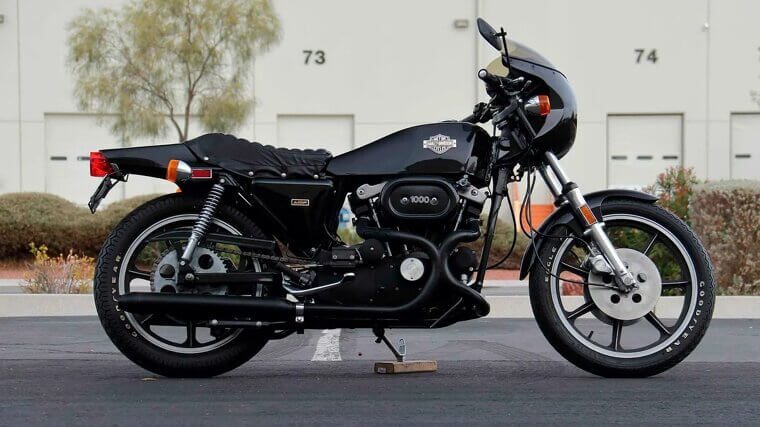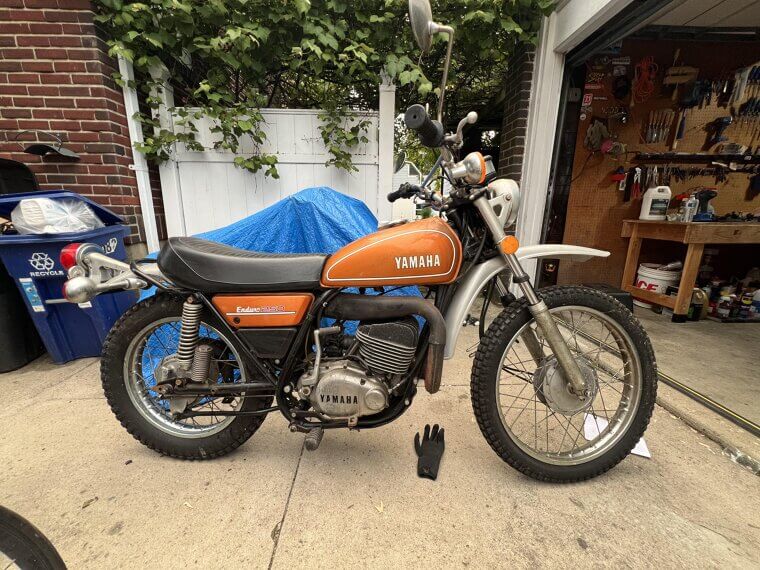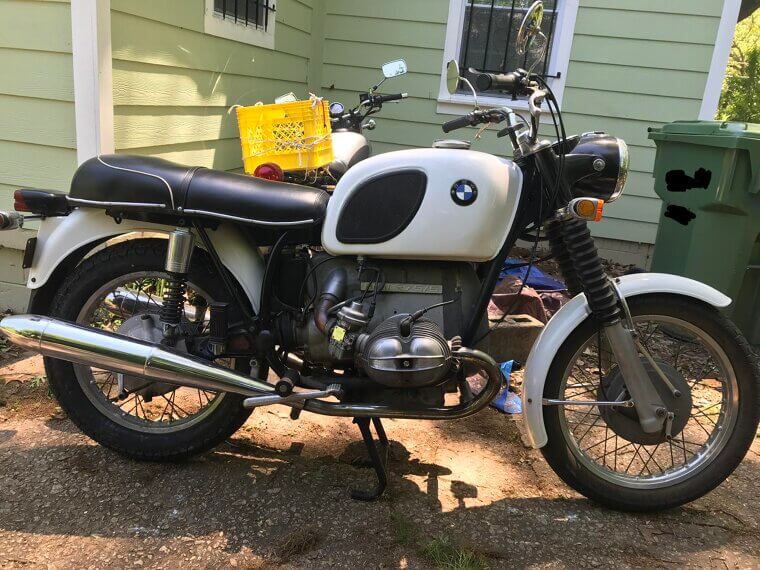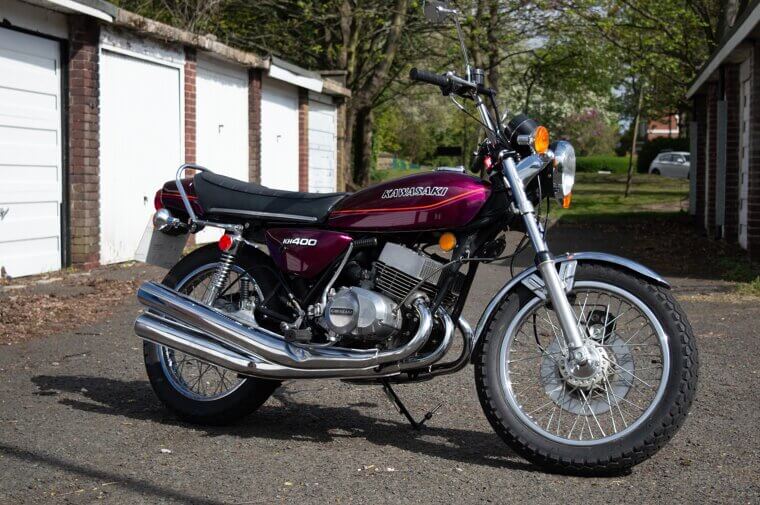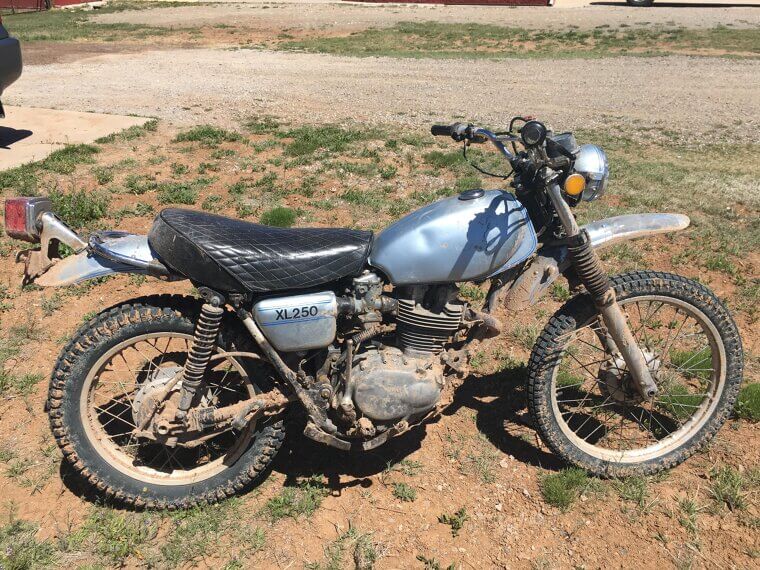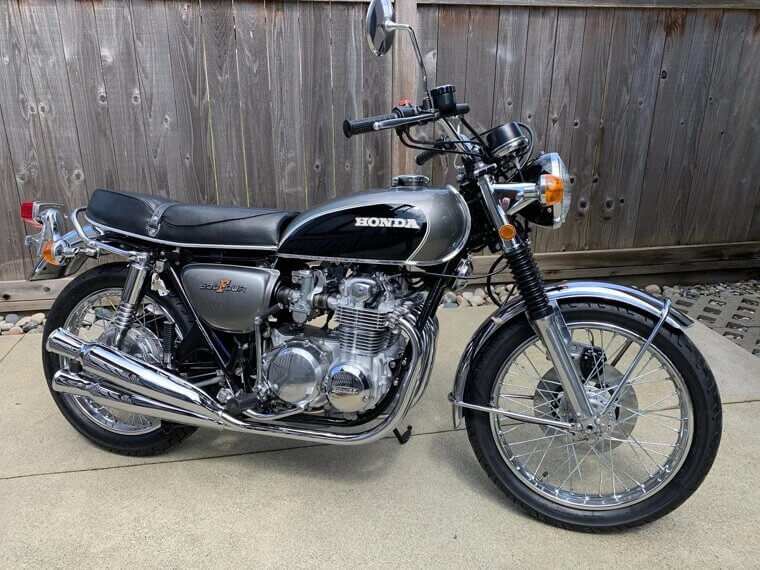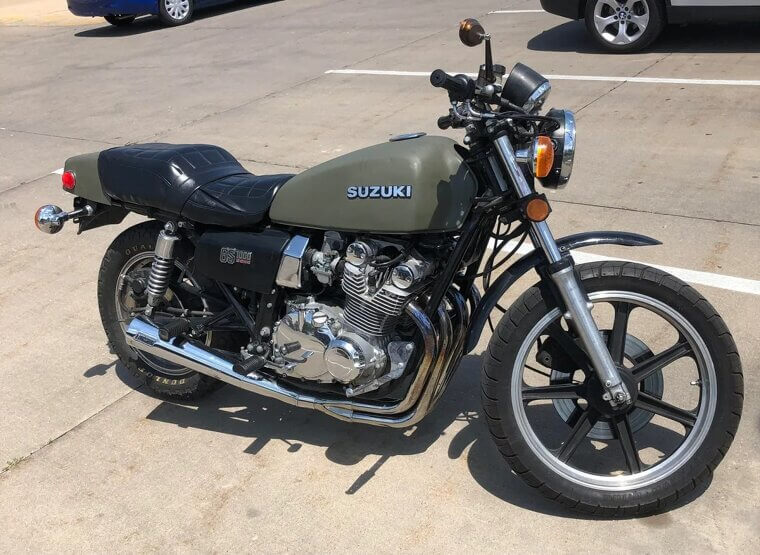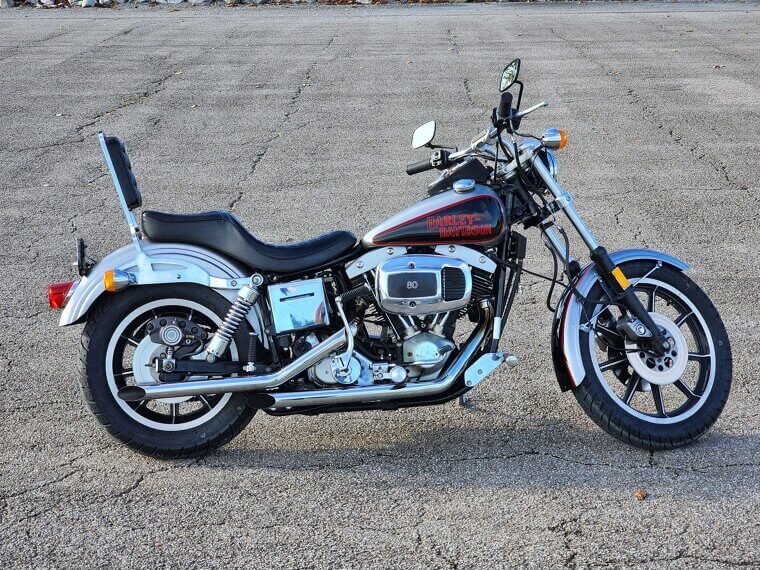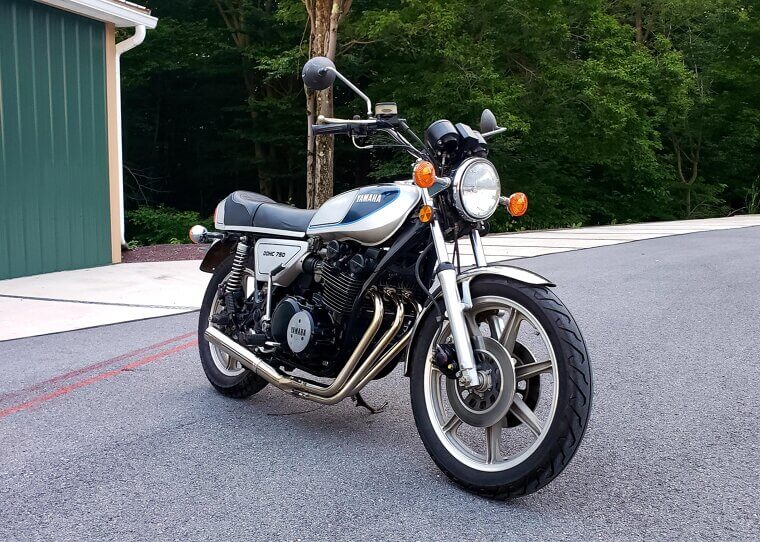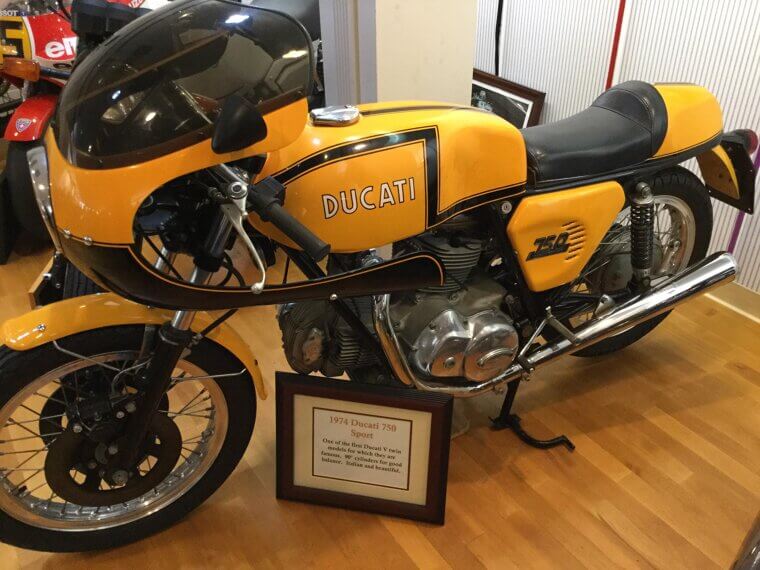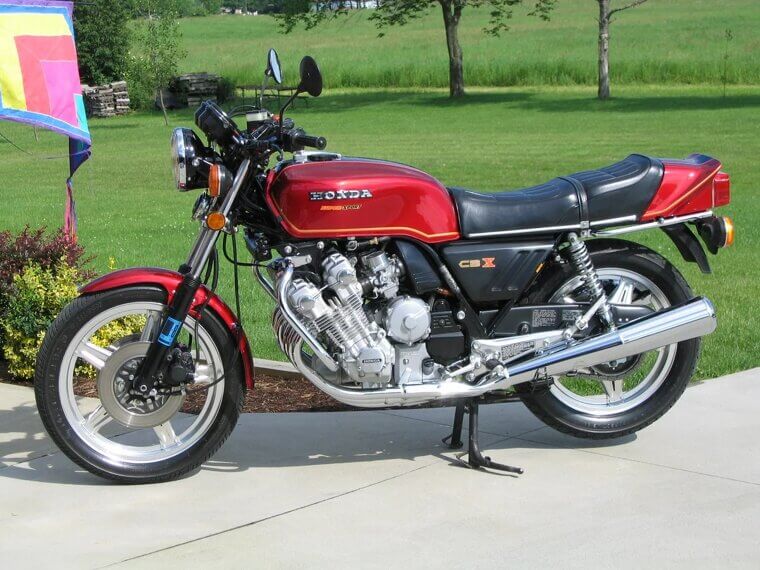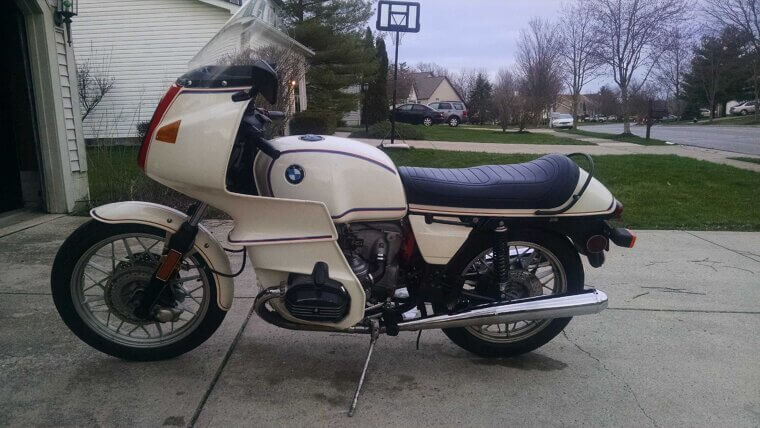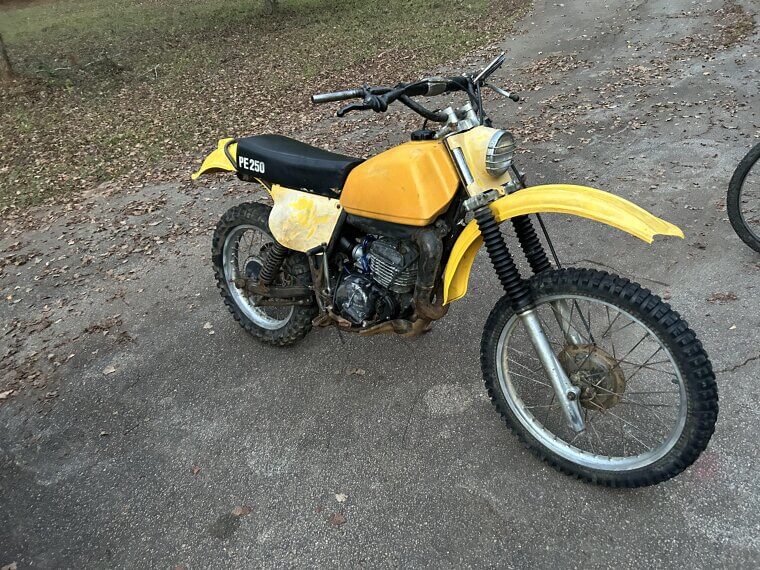Suzuki RM370
Before motocross went mainstream, the RM370 was king of the dirt. It was fast, simple, and brutally effective. With a lightweight frame and monstrous two-stroke power, it demanded skill but rewarded guts. It’s the bike that helped Suzuki dominate the motocross scene in the ’70s, and left plenty of bruises doing it.
Honda CB750
The Honda CB750 laid the foundation for the superbike category. Its unique features, like its inline-four engine, front disc brake, and reliability, astonished the motorcycle world in 1969 and dominated the 1970s. The Honda CB750 was so advanced that Enzo Ferrari reportedly called it "the motorcycle of the century."
Kawasaki Z1 900
When Kawasaki released the Z1 in 1972, it quickly became a legend. With 82 horsepower and a top speed of more than 130 mph, it blew the competition away. The Z1 was the perfect combination of style, dependability, and power for those who wanted speed without the drama.
Harley-Davidson XR750
The XR750 was both an off-road racer and a style icon, and it ruled American flat-track racing. It was Evel Knievel's favorite bike, and it was a showpiece. It handled like a champ, sounded like thunder, and defined Harley's tough-as-nails image.
BMW R90S
The R90S was the glamorous side of BMW in an era filled with gray suits. It showed the world that the Germans could build performance bikes with style. Riders appreciated the R90S for its balanced handling, comfort, and that nice boxer-engine thrum.
Ducati 750 Super Sport
This beauty was a rolling piece of art. It was built to commemorate Ducati’s win at Imola in 1972, and it delivered quintessential Italian style with racing essence. With its Desmodromic valves and razor-sharp handling, it was a racetrack champion and a collector’s dream.
Yamaha RD350
This was the two-stroke troublemaker your parents told you to steer clear of. Light, fast, and always up for a wheelie, the RD350 was nicknamed “The Giant Killer” for outrunning bigger bikes.
Suzuki GT750 “Water Buffalo”
The GT750 was the first liquid-cooled production motorcycle in history. It was smooth, heavy, and surprisingly comfortable for a muscle bike in the ’70s. Riders joked about its size and called it the “Water Buffalo,” but with that 739cc two-stroke triple, it moved like a stampede. The sound of the exhaust was also one of the coolest ones ever.
Norton Commando 850
Although the Commando wasn't the fastest motorcycle, it had a cool British charm. The Commando boasted a distinct "Isolastic" frame for vibration taming, providing riders with a comfortable and speedy ride. It looked good outside every pub in the UK and won “Motorcycle of the Year” on multiple occasions.
Triumph Bonneville T140
If cool had a sound, it would be a Triumph Bonneville rumbling down the street. The T140 carried the Bonneville name through the ‘70s with a bigger 750cc engine and twin disc brakes. It was simple, stunning, and forever tied to rock stars and rebels who didn’t mind a little oil on their boots.
Honda Gold Wing GL1000
When Honda launched the Gold Wing in 1975, touring changed forever. A water-cooled flat-four engine, smooth ride, and quiet power made it perfect for long hauls. Riders suddenly realized cross-country trips could be comfy and classy.
Kawasaki KZ1000
Built for speed demons, the KZ1000 was a hit with police and outlaws alike. Its inline-four engine packed serious muscle, and it handled better than most cars of the era. It even starred in CHiPs, the show with the highway patrol guys in aviators.
Moto Guzzi Le Mans 850
The Le Mans looked like it just escaped from a racetrack. With its V-twin engine and low-slung stance, it mixed Italian drama with real-world rideability. It wasn’t perfect, but it had lots of character.
Suzuki GS750
Suzuki’s GS750 was the brand’s grown-up moment. This four-stroke machine proved they could compete with Honda and Kawasaki in performance and reliability. It handled beautifully, cruised comfortably, and didn’t leak oil like some rivals. Riders loved that it could tear up a racetrack on Sunday and commute on Monday.
Harley-Davidson Super Glide
The Super Glide was Harley’s first factory custom, mixing a Sportster front end with a big Twin engine. It looked rebellious straight off the showroom floor. Some traditionalists weren’t sold, but it became the blueprint for the cruiser scene.
Yamaha XS650
The XS650 was smooth, reliable, and perfect for café racers and custom builds. It even became a favorite among flat-track racers. It didn’t leak, it didn’t whine, and it gave Triumph and Norton a serious run for their money.
Honda CB400F Super Sport
Small but mighty, the CB400F was the cool kid of Honda’s lineup. It had a smooth four-cylinder engine, a slick six-speed gearbox, and that iconic swooping exhaust that looked straight off a race bike. Riders loved how refined it felt for its size. Plus, it could hit 100 mph, which felt downright rebellious for a “little” 400.
Kawasaki H2 Mach IV 750
This thing was an absolute animal. It was a 750cc two-stroke triple that took off like a rocket and made new riders nervous. It produced about 74 horsepower, which was crazy for 1972, and was infamous for lifting its front wheel at every stoplight.
Ducati 900SS
When Ducati introduced the 900SS, it represented pure Italian passion in metal form. The “SS” stood for Super Sport, and it lived up to the name with track-inspired handling and a thundering twin engine. It wasn't the easiest motorcycle to ride, but it rewarded skill and bravery.
Harley-Davidson Café Racer XLCR
Harley attempted to go European with the XLCR. It looked great, sounded mean, and had tons of attitude. Unfortunately, traditional Harley riders didn't understand it, and sport riders didn't trust it. About 3,000 were made, and today it is a collector's dream.
Yamaha DT250
The DT250 is essentially the bike that started the dual-sport craze. You could ride it to work, then hit the trails without breaking a sweat. It was lightweight, tough, and surprisingly fast. Dirt riders loved it, commuters admired it, and everyone else just wanted to use it for the weekend.
BMW R75/5
Elegant, dependable, and smoother than your dad’s jazz records, the R75/5 was a true gentleman’s motorcycle. It had an electric starter, decent horsepower, and BMW’s signature boxer engine. It became a favorite among long-distance riders who valued comfort and precision over flash.
Kawasaki KH400
This was the fun-sized version of Kawasaki’s legendary two-stroke rockets. The KH400 packed enough punch to thrill without scaring the life out of you. Riders loved its raspy exhaust note and playful handling. It was like a Mach IV’s younger sibling who still knew how to get into trouble but smiled while doing it.
Honda XL250
Honda called the XL250 a “street-legal dirt bike,” and they weren’t kidding. It was the first mass-produced four-stroke off-roader, and it was bulletproof. It kick-started easily, handled beautifully, and could climb nearly anything. It became the go-to ride for adventurers before “adventure bikes” were even a thing.
Triumph Trident T160
This was Triumph’s last great hurrah before the brand hit hard times. The Trident T160 was fast, refined, and full of personality. It had an electric starter, a five-speed gearbox, and that classic triple-cylinder growl. Although it arrived just as Japanese bikes took over the market, it remains a cult favorite for true British bike fans.
Moto Morini 3½ Sport
The Moto Morini 3½ Sport didn’t have big horsepower, but it had tons of personality. With its punchy 344cc V-twin and razor-sharp handling, it became a cult favorite across Europe. Riders loved its reliability and nimble feel. It even used a belt-driven camshaft, which was pretty high-tech for the ’70s.
Honda CB500 Four
The CB500 Four was the sweet spot between the lightweight 350 and the mighty CB750. It revved high, ran smoothly, and had that signature Honda reliability. It looked fast just standing still and was surprisingly affordable. Many riders still say it’s one of Honda’s most perfectly balanced bikes ever made.
Suzuki GS1000
The GS1000 marked Suzuki’s entry into the big-bike league. With a 997cc four-cylinder engine, it could hit 140 mph, which was wild for its time. It handled corners with grace and had a reputation for indestructibility. It even inspired Suzuki’s later superbikes.
Harley-Davidson Low Rider
When the Low Rider dropped in 1977, it was love at first sight. With its slammed stance, drag bars, and street-tough attitude, it screamed cool. Harley nailed the custom look straight from the factory. Back then, this bike was a lifestyle statement.
Yamaha XS750 Triple
Yamaha took a swing at the triple-cylinder trend with the XS750, and it worked beautifully. It offered smooth power, shaft drive, and futuristic digital gear indicators. It wasn’t flashy, but it was dependable and fast. Riders loved its touring comfort mixed with sporty handling.
Ducati 750 Sport
Before the 900SS, there was the 750 Sport. It was built for riders who cared more about cornering than comfort. Its L-twin engine and bright yellow paint made it a head-turner. Ducati only made a few hundred, making it one of the most collectible bikes today.
Kawasaki KZ650
The KZ650 was called the “Son of Z1,” and it earned that title. It was quick, nimble, and a lot easier to handle than its big brother. Reviewers in the ’70s called it the best middleweight bike ever built.
Honda CBX
Jaws dropped when Honda unveiled the CBX in 1978. A six-cylinder, 1047cc monster that screamed like an F1 car and hit 140 mph. It was over the top in the best way possible.
BMW R100RS
The R100RS was the first production bike with a full aerodynamic fairing, tested in a wind tunnel. It was both practical and classy, and made highway riding smoother and faster. With its signature boxer twin and impeccable build quality, it became a favorite among long-distance riders.
Suzuki PE250
For off-road fans, the PE250 was a game-changer. Light, tough, and fast, it helped Suzuki dominate enduro racing. It was easy to fix, hard to kill, and a blast to ride through mud or desert trails.

